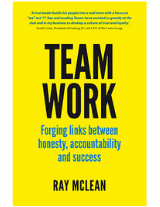Employee engagement has been a hot ticket leadership topic for quite some time now – and for good reason. By nature, an engaged team member is what any business should strive for. They are the employees that are motivated to do good work, the ones that stay loyal to their organisations and the ones that are not just productive but positive colleagues.
That’s why it’s so concerning that a 2017 Aon Hewitt study found that only 24 per cent of global employees consider themselves highly engaged at work. In fact, in the Asia Pacific region specifically, there was a significant decline in employee engagement since just last year.
Why do Australian leaders need to invest in engagement?
Engagement is more than just a buzzword, it’s a business driver. When leaders can influence their team to become engaged and motivated in their everyday work, they are setting their organisations up for success. One Gallup study found that there is a distinct link between engagement and key performance outcomes.
Engagement is more than just a buzzword, it’s a business driver.
Gallup’s research determined that companies with top quartile levels of employee engagement performed 22 per cent better in terms of profitability compared to companies in the bottom quartile. Organisations with engaged team members also had 21 per cent higher productivity levels, 10 per cent higher customer ratings and lower employee turnover rates than companies with low levels of employee engagement.
Profit, productivity, ratings and retention can all improve by simply investing in engaging your team. Which leaves us with one final question: How can Australian leaders improve engagement levels?
As with any genuine change, employee engagement begins with a buy-in from the top. People can’t become engaged unless leaders make an effort to engage them, it’s truly that simple. Here are some key steps any leader can take to achieve a more engaged staff and a more successful business.
1. Make your team feel valued
A little recognition goes a long way when it comes to employee engagement. When your team feels valued by leadership and each other, they become more motivated to work at their full capacity. In fact, the Aon Hewitt study found that rewards and recognition have the most potential to improve engagement internally. Whether this means investing in a recognition platform or simply dedicating more time to recognising a job well done, showing your team that you value them can have a major impact.
#EmployeeEngagement Fact of the Day: 71% of employees prefer a manager who shows praise for any improvement made
— Employee Engagement (@EmplyEngagement) June 5, 2017
2. Have genuine conversations about engagement
Genuine conversations are the backbone of any kind of durable professional relationship and without these discussions employee engagement is nearly impossible. In order to capture the passion and attention of your team, you first need to understand what is and isn’t working. Your team is the key to improving engagement because they know better than anyone else what would engage both themselves and their peers.
Genuine conversations are the backbone of any kind of durable professional relationship.
3. Create professional pathways
You want your team to understand how they fit in with the bigger organisational picture. This means creating professional development opportunities and career paths that account for their interests and strengths. Once employees understand that they are important in their current role and that they have a place in the future of the company, they will become more invested in their role and the organisation as a whole.
4. Lead by example
The successes and failures in the realm of employee engagement always trace back to leadership. Whether that means investing in things that their team needs or simply showing the value of their peers, leaders need to embody engagement in everything they do.
Leading Teams can help you to engage with your team. To find out how, contact us today.




